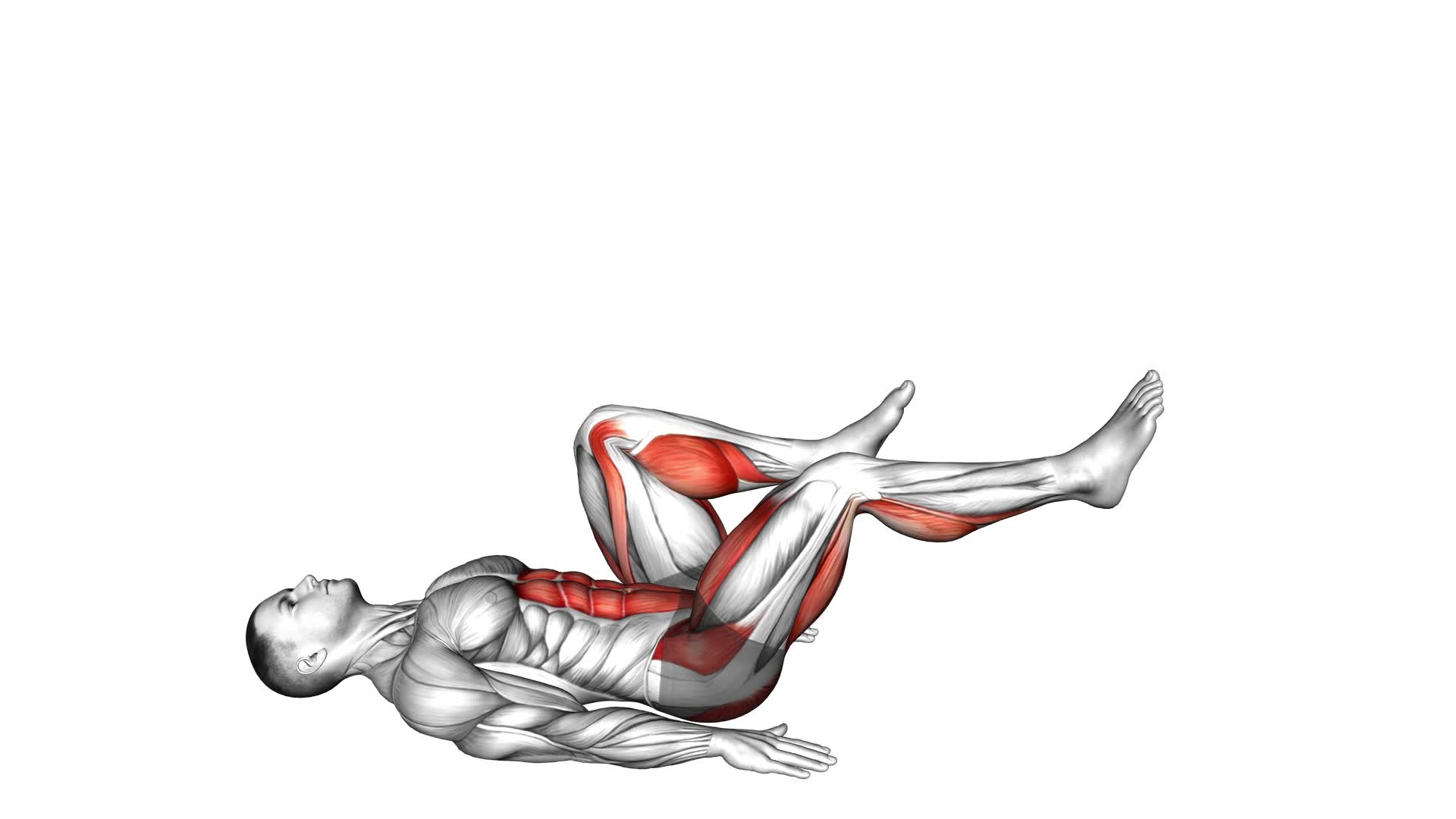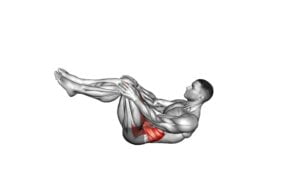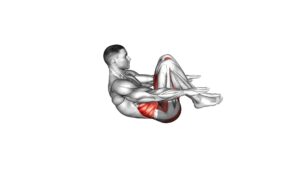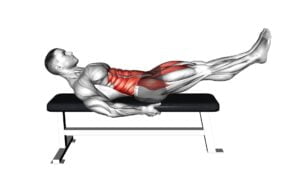Lying Cycle (male) – Video Exercise Guide & Tips

Looking to add a new exercise to your routine? Check out this video exercise guide for the lying cycle!
Watch This Exercise Video
In just a few minutes a day, you can reap the benefits of this effective workout. Learn the proper form and technique, as well as tips for increasing intensity.
With modifications and variations available, there's something for everyone.
Don't miss out on this opportunity to challenge yourself and take your fitness to the next level!
Key Takeaways
- The lying cycle exercise provides benefits such as increased lower body strength and improved cardiovascular endurance.
- Proper form and technique for the exercise include maintaining a neutral spine, engaging the core, and controlling the movement.
- Increasing intensity can be achieved by adding resistance, incorporating advanced progressions, or increasing the speed of pedaling.
- Modifications and variations of the lying cycle exercise include single leg lying cycle, weighted lying cycle, reverse lying cycle, and lying cycle with bicycle crunch or leg raises.
Benefits of the Lying Cycle Exercise
You can experience increased lower body strength and improved cardiovascular endurance through the lying cycle exercise. This exercise primarily targets the muscles in your legs, including your quadriceps, hamstrings, and glutes. By engaging these large muscle groups, you can build strength and power in your lower body. Additionally, the lying cycle exercise provides an excellent cardiovascular workout, helping to improve your heart and lung health.
To incorporate the lying cycle exercise into your workout routine, start by lying on your back with your hands behind your head and your legs extended. Bend your right knee and bring it towards your chest while simultaneously lifting your upper body off the ground. As you do this, extend your left leg straight out in front of you. Repeat this motion on the other side, bringing your left knee towards your chest and extending your right leg. Continue alternating sides for a set number of repetitions or a specific amount of time.
Now that you know the benefits and how to incorporate the lying cycle exercise into your routine, it's important to focus on proper form and technique. By maintaining proper alignment and engaging your core, you can maximize the effectiveness of this exercise and reduce the risk of injury.
Proper Form and Technique for the Lying Cycle Exercise
To ensure optimal results and minimize the risk of injury, it's important to maintain proper form and technique while performing the lying cycle exercise. Here are some key tips to keep in mind:
- Maintain a neutral spine: Keep your back straight and avoid arching or rounding your lower back. This will help protect your spine and engage the targeted muscles effectively.
- Engage your core: Activate your core muscles by pulling your belly button towards your spine. This will provide stability and support throughout the exercise.
- Control the movement: Slow and controlled movements are crucial for this exercise. Avoid using momentum to swing your legs, as it can lead to injury and diminish the benefits of the exercise.
- Focus on your breathing: Inhale deeply as you extend your legs and exhale as you bring them back towards your chest. This will help with maintaining proper form and engaging your core muscles.
- Modify as needed: If you find the lying cycle exercise too challenging, you can modify it by bending your knees and performing the movement with smaller range of motion. As you build strength and flexibility, you can gradually increase the difficulty.
By following these tips, you can perform the lying cycle exercise with proper form and technique, maximizing its benefits while minimizing the risk of injury.
Stay consistent and keep pushing yourself to achieve your fitness goals!
Tips for Increasing Intensity and Difficulty of the Lying Cycle Exercise
To increase the intensity and difficulty of the lying cycle exercise, focus on gradually adding resistance to challenge your muscles further. Increasing resistance is a key strategy to keep your muscles guessing and prevent plateauing.
One way to do this is by using ankle weights or resistance bands. By strapping on ankle weights, you increase the load on your legs, making each pedaling motion more challenging. Resistance bands can also be attached to your ankles to provide an additional challenge.
Another way to increase the difficulty is by incorporating advanced progressions. You can try performing the lying cycle exercise with your hands behind your head or by lifting your upper body off the ground as you pedal. Both of these variations engage your core muscles more intensely and require greater strength and stability.
Additionally, you can increase the speed at which you pedal, pushing yourself to maintain a faster pace.
Modifications and Variations of the Lying Cycle Exercise
For added versatility and challenge, incorporate modifications and variations into your lying cycle exercise routine. By introducing these changes, you can target different muscle groups, increase intensity, and keep your workouts fresh and exciting. Here are some lying cycle modifications and advanced lying cycle variations to take your exercise routine to the next level:
- Single Leg Lying Cycle: Lift one leg off the ground while performing the lying cycle. This variation adds instability, forcing your core and stabilizer muscles to work harder.
- Weighted Lying Cycle: Hold a dumbbell or medicine ball in your hands as you perform the lying cycle. The added resistance increases muscle engagement and strengthens your upper body.
- Reverse Lying Cycle: Instead of pedaling your legs forward, pedal in a reverse motion. This variation targets your hamstrings and glutes, providing a different challenge to your lower body.
- Lying Cycle with Bicycle Crunch: As you pedal your legs, simultaneously perform a bicycle crunch by bringing your opposite elbow to your knee. This modification engages your core and oblique muscles for a more comprehensive workout.
- Lying Cycle with Leg Raises: Lift your legs off the ground and perform leg raises while pedaling. This variation increases the difficulty and engages your lower abs and hip flexors.
Incorporating these lying cycle modifications and advanced variations into your routine won't only keep you motivated but also help you achieve better results.
Remember to listen to your body and progress at your own pace. Challenge yourself, but always prioritize proper form and technique. Push your limits and enjoy the benefits of a well-rounded lying cycle exercise routine.
Common Mistakes to Avoid When Performing the Lying Cycle Exercise
One common mistake to avoid when performing the lying cycle exercise is neglecting proper form and technique. It's easy to get caught up in the movement and forget about maintaining the correct posture, but this can lead to ineffective results and potential injuries. To ensure you're getting the most out of this exercise, here are some tips for improvement.
Firstly, make sure to maintain a neutral spine throughout the entire movement. Avoid arching your back or letting it sag. Engage your core muscles to stabilize your spine and keep it aligned.
Another common mistake is rushing through the exercise. Remember, quality over quantity. Slow down and focus on each repetition, feeling the muscles engage and work. This won't only maximize the benefits but also reduce the risk of injury.
Additionally, don't forget to breathe properly. Many people tend to hold their breath during challenging exercises. Take deep breaths in and out, coordinating your breath with the movement. This will help oxygenate your muscles and improve your endurance.
Lastly, pay attention to your range of motion. Avoid swinging your legs or using momentum to complete the exercise. Instead, focus on controlled and deliberate movements, bringing your knees towards your chest and extending your legs fully.
Frequently Asked Questions
How Many Calories Can Be Burned by Doing the Lying Cycle Exercise?
You're probably wondering how many calories you can burn by doing the lying cycle exercise. Well, let me tell you, this exercise is a great way to torch those calories and get your heart pumping.
Whether you're a beginner or a seasoned pro, the lying cycle is suitable for all fitness levels. So lace up those shoes, hop on that mat, and get ready to sweat off those calories!
Can the Lying Cycle Exercise Be Done by Beginners?
Yes, beginners can definitely do the lying cycle exercise. It's a great way to get started on your fitness journey.
The lying cycle exercise can be modified to suit your fitness level, ensuring that you can work at your own pace.
By incorporating this exercise into your routine, you'll experience the many benefits it offers, such as strengthening your core, improving your balance, and toning your muscles.
Is the Lying Cycle Exercise Suitable for People With Lower Back Pain?
If you have lower back pain, the lying cycle exercise may not be suitable for you. However, there are alternative exercises that you can try to strengthen your core without putting too much strain on your back.
It's important to take precautions while performing any exercise, especially if you have a pre-existing condition. Make sure to consult with a healthcare professional or a certified trainer before attempting any new exercises.
Don't let back pain hold you back from staying active and fit!
How Long Should One Hold Each Repetition of the Lying Cycle Exercise?
When doing the lying cycle exercise, it's important to know how long to hold each repetition. The duration of each hold can vary depending on your fitness level.
If you're just starting out, aim for about 10-15 seconds per repetition. As you get stronger, gradually increase the hold time to 20-30 seconds.
Remember to listen to your body and modify the exercise if needed. Avoid common mistakes like rushing through the movement or arching your lower back.
Stay focused and stay consistent!
Can the Lying Cycle Exercise Help in Toning the Abdominal Muscles?
The lying cycle exercise is a great way to tone your abdominal muscles. By lying on your back and cycling your legs in the air, you engage your core and work those abs.
This exercise has many benefits, including strengthening your core, improving balance, and burning calories. Plus, there are variations you can try to make it more challenging or target different parts of your abs.
Conclusion
In conclusion, the lying cycle exercise is a highly beneficial and effective workout for males. By following proper form and technique, you can target your core muscles and improve your overall strength and stability.
To increase the intensity, try adding weights or increasing the number of repetitions. Additionally, there are various modifications and variations of this exercise to suit your fitness level.
Remember to avoid common mistakes and stay consistent with your workouts to see great results. Keep pushing yourself and enjoy the benefits of the lying cycle exercise!

Author
Years ago, the spark of my life’s passion ignited in my mind the moment I stepped into the local gym for the first time. The inaugural bead of perspiration, the initial endeavor, the very first surge of endorphins, and a sense of pride that washed over me post-workout marked the beginning of my deep-seated interest in strength sports, fitness, and sports nutrition. This very curiosity blossomed rapidly into a profound fascination, propelling me to earn a Master’s degree in Physical Education from the Academy of Physical Education in Krakow, followed by a Sports Manager diploma from the Jagiellonian University. My journey of growth led me to gain more specialized qualifications, such as being a certified personal trainer with a focus on sports dietetics, a lifeguard, and an instructor for wellness and corrective gymnastics. Theoretical knowledge paired seamlessly with practical experience, reinforcing my belief that the transformation of individuals under my guidance was also a reflection of my personal growth. This belief holds true even today. Each day, I strive to push the boundaries and explore new realms. These realms gently elevate me to greater heights. The unique combination of passion for my field and the continuous quest for growth fuels my drive to break new ground.







